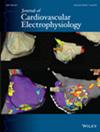Left Bundle Branch Pacing Impact on QRS Amplitude in Different Pacing Voltages
Abstract
Background
Left bundle branch pacing (LBBP) emerged as a novel physiological pacing modality that improves clinical outcomes. This study aimed to explore the impact of LBBP on QRS wave amplitude (RWA).
Methods
This prospective observational study included patients with complete left bundle branch block (CLBBB) and cardiac resynchronization therapy (CRT) indication, as well as patients with QRSd < 120 ms and pacemaker indication. During the procedure, when the LBBP lead reached the target site, 12-lead ECGs at baseline and 1, 2, 3, 4, and 5 times the pacing thresholds and 3.5 V (pacemaker default value) pacing were recorded, and RWA values were measured accordingly. The absolute values of I + aVL, II + III+ aVF, and V1 + V2 + V3 + V4 + V5 + V6 RWA were defined as X-, Y-, and Z-axis ΣRWA.
Results
A total of 195 consecutive patients (50 CLBBB and 145 narrow QRS) were enrolled (69.7 ± 10.3 years, 52.3% male). Compared with the baseline, LBBP significantly increased X- and Y-axis ΣRWA independent of pacing voltage in CLBBB (ΔX/Y-axis 0.49 ± 0.78 mV, p < 0.0001/0.61 ± 1.24 mV, p = 0.001) and narrow QRS group (ΔX/Y-axis 0.88 ± 0.61 mV, p < 0.0001/0.91 ± 1.05 mV, p < 0.0001); LBBP significantly reduced Z-axis ΣRWA in CLBBB patients (ΔZ-axis −2.64 ± 3.67 mV, p < 0.0001) but not in narrow QRS group (ΔZ-axis −0.14 ± 1.87 mV, p = 0.36). LBBP significantly improved cardiac function at 1 week of follow-up.
Conclusions
LBBP significantly increased X/Y-axis ΣRWA independent of pacing voltage in CLBBB and narrow QRS patients. LBBP significantly reduced Z-axis ΣRWA in CLBBB but not in narrow QRS patients. Whether these ΣRWA changes, through enhancing whole myocardial contractility, have a synergistic effect with LBBP synchronization to further improve cardiac function remains to be investigated.

 求助内容:
求助内容: 应助结果提醒方式:
应助结果提醒方式:


